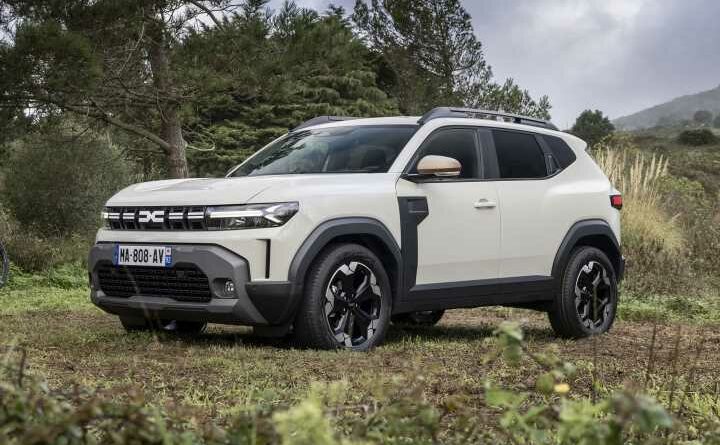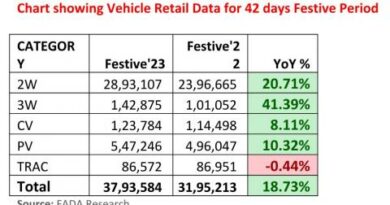Good news! There’s an all-new Dacia Duster
Fresh look, new platform, hybridised engines and recycled materials for all the SUV you'll ever need
By Matt Bird / Wednesday, 29 November 2023 / Loading comments
While the initial Dacia headlines in the UK focused on the shockingly low price of the Sandero, it is the Duster that has come to exemplify the appeal of the brand in the UK. The people want an SUV, so that’s what Dacia gave them, albeit without so much of the (often unnecessary) complexity and expense found elsewhere. It’s proved a very successful approach, too, both for the Duster and other models in the Dacia range, and so it’s been continued into this all-new generation – with a few important updates.
The CMF-B platform is probably the most important part of the refresh; also used in the Jogger and Sandero, it means hybridised Dusters are possible for the first time. Dacia also suggests the new architecture will bring additional space in a very similarly sized car (including 472 litres of boot space), improved refinements and a ‘quantum leap in driving pleasure’. Which sounds nice.
The powertrains will be familiar from other Dacias also underpinned by CMF-B. There’s the Hybrid 140 1.6, which pairs a four-cylinder petrol engine with 49hp electric motor and 1.2kWh battery, a mild-hybrid, Miller Cycle 1.2 TCe 130 and the LPG-compatible TCe 100 Bi-Fuel. The 130 is offered with a manual gearbox in both 4×2 and 4×4 drivetrains; the Hybrid uses a clutchless electric auto gearbox.
While Dacia is aware of the Duster’s limitations as a ‘non-expert 4×4’, it has sought improvements in its off-roading capacity. Optioned with the 4×4 Terrain Control transmission, there are five drive settings (Auto, Snow, Mud/Sand, Off-Road and Eco) to make the most of the additional driven axle. The 4×4 offers 217mm of ground clearance, with up to 31 degrees at the front and 36 degrees at the rear of approach and departure angles. There’s even hill descent control. A ‘protective belt’ of flank shields, wheelarch guards and bumpers (plus skid plates underneath) should protect the Duster should owners venture off the beaten track.
With sustainability the name of the game when it comes to car building at the moment, the Duster comes chock full of recycled materials and innovative solutions. Those skid plates are ‘dyed in the mass’, which means paint isn’t required, and lots of body parts are made using something called Starkle. First seen on the Manifesto concept, it comprises 20 per cent recycled polypropylene and includes ‘white particles that give it a mottled look’ – that’s left unpainted. The interior mats are recycled, there’s no leather or decorative chrome on any model, and even the user manual in the car now features less paper (with a full one online.) Dacia says 20 per cent of the plastic in the Duster is recycled.
As has become Dacia tradition, too, there are a few novel features and options to note. There are YouClips to hold accessories tight around the cabin, a new roof rack that can hold up to 80kg, and the Sleep Pack first seen in on the Jogger is optionally available. Those who go for the Extreme will get washable TEP MicroCloud upholstery.
All well and good, though it’s easy to imagine customers caring not one jot about the hardware changes and being entirely won over by the new look. Having earned its reputation with a utilitarian, back-to-basics charm, this third-generation Duster really turns on the style – especially when kitted out with all the off-road accessories. Dacia describes it as ‘stronger and more assertive’, combining the new brand cues like the logo and Y-shaped light signatures with a more rugged stature than we’ve seen before. Apparently, we should pay attention to the sharp, vertical face, chamfered wheel-arch guards and large windows as simple shapes that ‘add to the design’s power’. David Durand, Dacia Design Director, said: “Before even starting work on All-New Duster’s style, we honed its proportions, to find a strong, balanced posture. When you get the proportions right early on, you don’t need artifices to tweak style later.”
The interior has been given a makeover as well, with a new 10.1-inch touchscreen that comes with Media Display (smartphone connectivity and four speakers) or Media Nav Live (which adds nav and an Arkamys stereo). Only on Essential trim must buyers make do with a 3.5-inch screen, though that seems unlikely given that 70 per cent of Duster customers go for plusher specs. There’s a seven-inch digital dash from Expression trim and up, plus USB-C and wireless chargers, cruise control, a glut of driver assistance bits and Firmware Over The Air updates.
All sounds pretty promising, right? All the clever bits of Dacia motoring, now wrapped up in a more handsome design and built on more modern hardware. Though there aren’t UK prices yet, specs have been confirmed; there will be a Duster Essential, which is pretty basic, followed by Expression (bringing 17-inch wheels, the digital dash and a smartphone-compatible touchscreen), then Extreme and Journey. Dacia says both of those will be similarly priced, the former aimed at ‘fans of the outdoors and an intense driving experience’ – with the washable upholstery, rubber mats and Copper Brown accents – while the latter focuses on ‘low-key elegance and comfort’ with 18-inch wheels, upgraded stereo, automatic air-con and so on. There will be a Duster to suit everyone, basically – don’t be surprised if the new Dacia SUV is cleaning up (sorry) when it goes on sale in 2024.
- 2023 Dacia Jogger Hybrid 140 | PH Review
- Dacia Duster | PH Fleet
Source: Read Full Article


